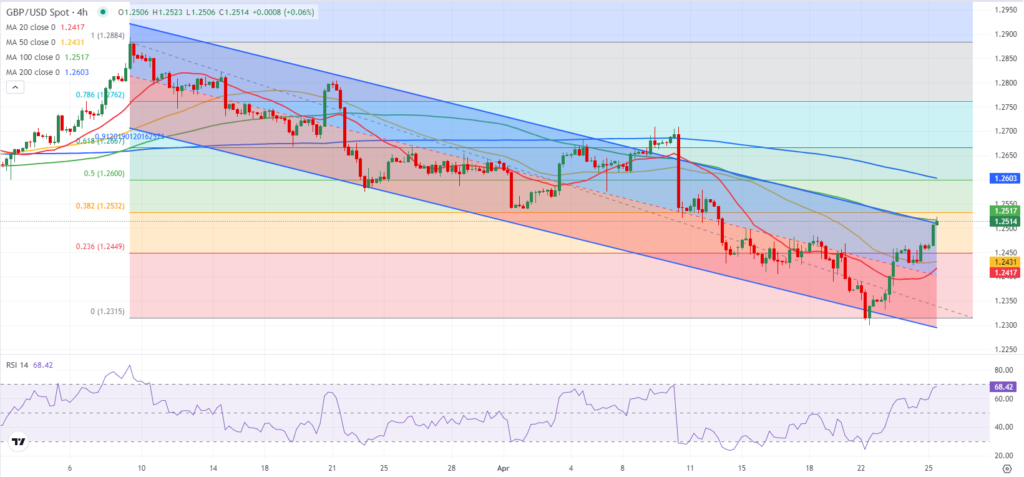- Gold price holds above $2,300 as the US Dollar drops ahead of preliminary US Q1 GDP data.
- The Fed may maintain the “higher for longer” interest rates argument even if GDP growth remains slower than expected.
- The easing of tensions in the Middle East has improved the demand for risky assets.
Gold prices (XAU/USD) are holding strong above the key $2,300 support level during Thursday’s European trading session. The metal is attracting bids as the US Dollar weakens further, driven by concerns that the Federal Reserve’s higher interest rates are dampening economic activity, as indicated by the preliminary PMI report from S&P Global for April.
The short-term outlook for gold is somewhat bearish as Federal Reserve officials show no immediate intent to cut rates amidst ongoing inflationary pressures and a tight labor market. Additionally, the demand for gold as a safe haven has decreased due to reduced concerns about an escalating conflict in the Middle East.
Key upcoming US economic reports, such as the first-quarter Gross Domestic Product (GDP) and the March core Personal Consumption Expenditures (PCE) Price Index, will be critical in determining the future trajectory of gold prices. Significant shifts in these indicators may prompt traders to reevaluate their expectations for the timing of potential rate cuts by the Fed, which are currently anticipated to begin in September.
Market Update: Gold Prices Seek Stability Ahead of Key US Economic Data
- Gold prices are rising, currently above $2,320, as the US Dollar continues to correct downwards. This drop follows weaker-than-expected preliminary PMI data for April, which has raised concerns over the US economic outlook. This data showed a decline in new business inflows for the first time in six months.
- The focus now shifts to the US GDP data for the first quarter, a crucial gauge of economic performance. Expectations are set for a 2.5% growth rate, a slowdown from the 3.4% expansion seen in the final quarter of 2023. Despite this slowdown, the US is still expected to outperform other G7 economies in terms of growth.
- A strong GDP outcome could support a continued restrictive monetary policy by the Fed, benefiting the US Dollar and potentially negatively impacting gold prices. Conversely, if the GDP growth is slower than expected, it might not significantly alter expectations for a gradual Federal Reserve approach to achieving a ‘soft landing’—balancing price stability without triggering a recession.
- The upcoming release of the March core PCE data, the Fed’s preferred inflation gauge, will also be closely watched. It is anticipated to show a steady month-over-month increase of 0.3%, with the annual rate possibly easing to 2.6% from February’s 2.8%.
- This inflation data will play a crucial role in shaping the Fed’s rate decision at the upcoming May 1 policy meeting, where rates are widely expected to remain unchanged at 5.25%-5.50%.
Technical Analysis: Gold Prices Maintain Ground Above $2,300

Gold is currently trading sideways above the $2,300 support level, awaiting important US economic data. The 20-day Exponential Moving Average (EMA) at $2,314 is providing support, suggesting that there is still potential for an upward movement.
On the downside, if prices drop, the recent three-week low near $2,265 and the March 21 high at $2,223 will serve as significant support levels.
The 14-period Relative Strength Index (RSI) has dropped below 60.00, indicating a reduction in bullish momentum. However, the overall upward bias will remain as long as the RSI stays above 40.00.

